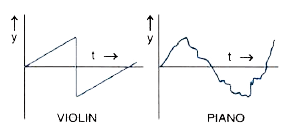Two offsprings developed in the same uterus from f ertilisation of two different ova are
Monozygotic twins
Dizygotic twins
Fraternal twins
Both (2) & (3)
The correct Answer is:D
To answer the question, "Two offsprings developed in the same uterus from fertilization of two different ova are," we can follow these steps:
1. Understanding Fertilization:
- Fertilization occurs when a male gamete (sperm) fertilizes a female gamete (ovum). In this case, we have two different ova being fertilized by two different sperm.
2. Formation of Zygotes:
- Each ovum that is fertilized will develop into a zygote. Since there are two different ova, this means that two separate zygotes are formed.
3. Identifying the Type of Twins:
- When two zygotes are formed from the fertilization of two different ova, the resulting twins are classified as dizygotic twins (also known as fraternal twins). This is because they originate from two distinct zygotes.
4. Characteristics of Dizygotic Twins:
- Dizygotic twins can be of the same sex (both male or both female) or of different sexes (one male and one female). They do not share identical genetic material, unlike monozygotic (identical) twins.
5. Conclusion:
- Therefore, the correct answer to the question is that the two offsprings are both dizygotic twins and fraternal twins. Thus, the correct option is "both 2 and 3".
Final Answer:
The two offsprings developed in the same uterus from fertilization of two different ova are both dizygotic twins and fraternal twins.
---
- Fertilization occurs when a male gamete (sperm) fertilizes a female gamete (ovum). In this case, we have two different ova being fertilized by two different sperm.
- Each ovum that is fertilized will develop into a zygote. Since there are two different ova, this means that two separate zygotes are formed.
- When two zygotes are formed from the fertilization of two different ova, the resulting twins are classified as dizygotic twins (also known as fraternal twins). This is because they originate from two distinct zygotes.
- Dizygotic twins can be of the same sex (both male or both female) or of different sexes (one male and one female). They do not share identical genetic material, unlike monozygotic (identical) twins.
- Therefore, the correct answer to the question is that the two offsprings are both dizygotic twins and fraternal twins. Thus, the correct option is "both 2 and 3".
The two offsprings developed in the same uterus from fertilization of two different ova are both dizygotic twins and fraternal twins.
Topper's Solved these Questions
- HUMAN REPRODUCTIONBOOK - AAKASH INSTITUTE ENGLISHCHAPTER - HUMAN REPRODUCTIONEXERCISE - Assignment ( Section - A ) (Objective Type Question )
25 Videos
- HUMAN REPRODUCTIONBOOK - AAKASH INSTITUTE ENGLISHCHAPTER - HUMAN REPRODUCTIONEXERCISE - Assignment ( Section - B ) (Objective Type Question )
40 Videos
- HUMAN REPRODUCTIONBOOK - AAKASH INSTITUTE ENGLISHCHAPTER - HUMAN REPRODUCTIONEXERCISE - Try Yourself
19 Videos
- EXCRETORY PRODUCTS AND THEIR ELIMINATIONBOOK - AAKASH INSTITUTE ENGLISHCHAPTER - EXCRETORY PRODUCTS AND THEIR ELIMINATIONEXERCISE - SECTION D ( ASSERTIN-REASON TYPE QUASTION)
10 Videos
- LOCOMOTION AND MOVEMENTBOOK - AAKASH INSTITUTE ENGLISHCHAPTER - LOCOMOTION AND MOVEMENTEXERCISE - ASSIGNMENT SECTION-D
10 Videos
Similar Questions
Knowledge Check
The fitness of individual with different phenotypes of the same trait differs in two different situation P and Q.P and Q respectively indicate
 Adisruptive and directional selectionBdirectional and stabilising selectionCdirectional and disruptive selectionDstabilising and disruptive selection
Adisruptive and directional selectionBdirectional and stabilising selectionCdirectional and disruptive selectionDstabilising and disruptive selection
How will you distinguish between two sounds of same pitch and loudness emitted from two different Sources ?
View SolutionThe two pairs of wings of an insect develop respectively from
View SolutionTwo musical notes of the same pitch and same loudness are played on two different instruments. Their wave patterns are shown in Fig.

Explain why are the wave patterns different.
View SolutionPolyploid derived from two different species is called :
View SolutionThe water flowing through the same tube having two different cross section areas has different flow rates .
View SolutionThe expulsion of completely developed foetus from the uterus is known as
View SolutionWhich two of the following statements are incorrect regarding in vitro fertilisation ?
(i) In this method, ova from the wife/donor female and sperms from the husband/donor male are induced to form zygote in the uterus
(ii) If the embryo is having 2 blastomeres, it is transferred into the uterus
(iii) If the embryo is with more than 8 blastomeres, it is transferred into the uterus.
(iv) The baby thus produced is called test tube baby.
View Solution
